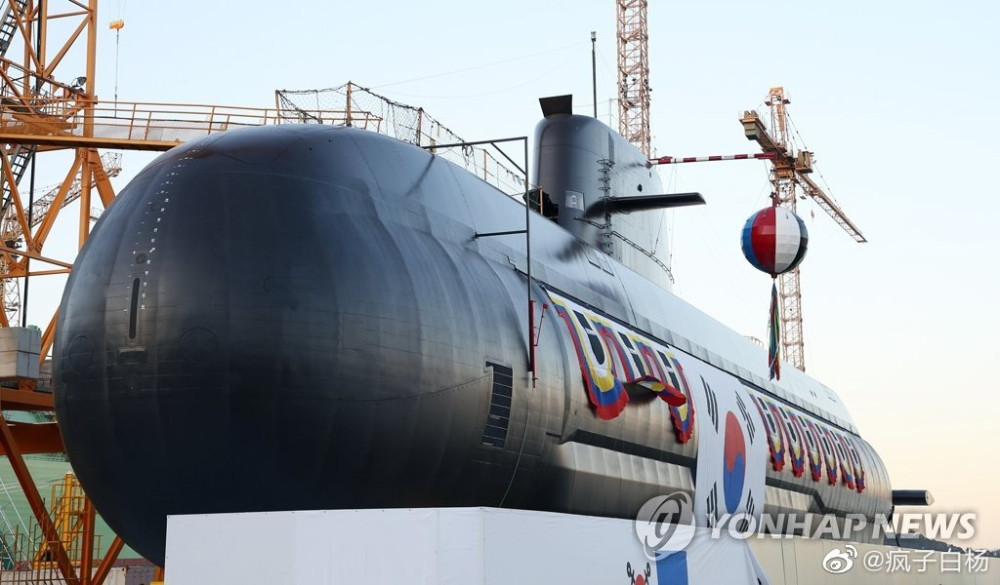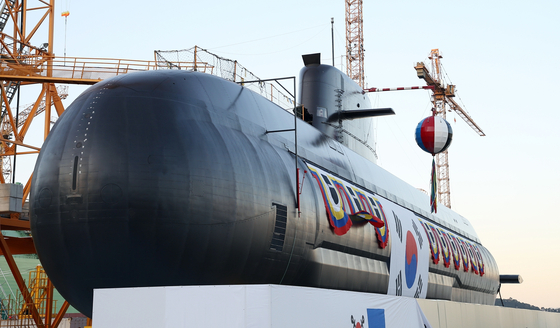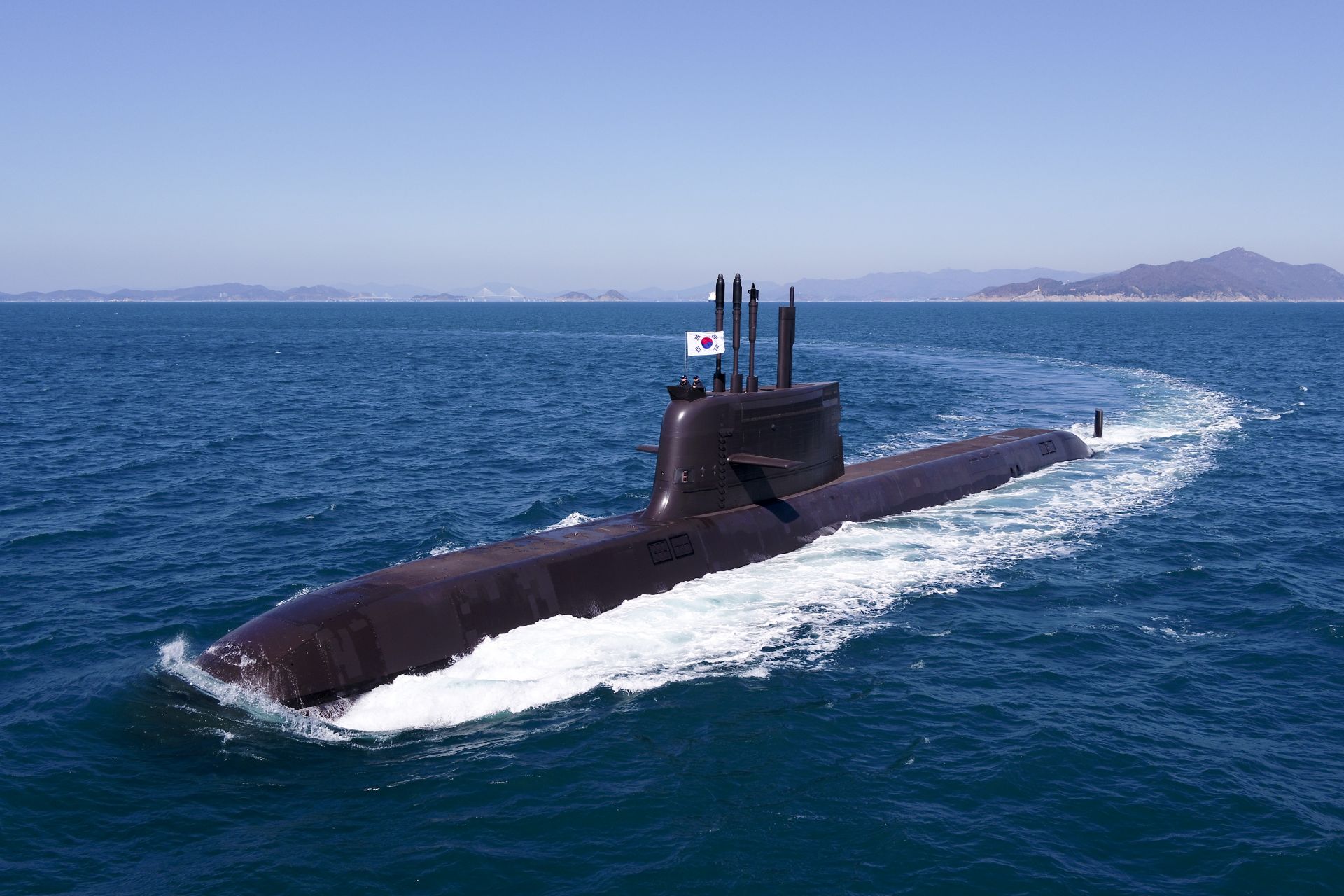
Launching ceremony for the 2nd KSS III submarine.
South Korea’s Daewoo Shipbuilding & Marine Engineering (DSME) launched ROKS Ahn Moo (SS-085), the Navy’s second Dosan Ahn Changho-class (KSS III program) submarine, today.
The vessel will be commissioned in 2022. The first submarine of this class, ROKS Dosan Ahn Chang-ho, is currently undergoing sea trials.
The Navy plans to add nine KSS III submarines to its fleet by 2019.
The South Korean Ministry of Defense in December 2012 awarded DSME $1.56 billion to build two large conventional/diesel electric (SSK) KSS III Batch-I submarines. In November 2016, Hyundai Heavy Industries (HII) received a contract to build another boat of the first batch. Delivery of all three boats is scheduled for the end of 2023.

Construction of the KSS-III Batch II project for Republic of Korea (ROK) Navy was approved in May 2019. Batch-II vessels will consist 3 hulls with some design changes. DSME was chosen in May 2016 to design and construct a KSS III Batch-II hull.
Batch-III will consists in the three remaining hulls with more advanced technologies.
KSS-III Batch 1 submarine has a displacement of over 3000 tons, has a length of 83.5 meters, a width of 9.6 meters, and a draft of 7.7 meters. Its maximum submerged speed is 20 knots, and the cruising range at economic speed is 10,000 nautical miles.
The crew consists of 50 sailors. The vessel is fitted with eight 533-mm torpedo tubes as well as 6x VLS (vertical launch system) tubes to accommodate a future cruise missile (Cheon Ryong with a range of 1,500 Km) in development by LIG Nex1 while the launchers would be provided by Doosan. Spanish INDRA will provide its electronic defense system (ESM) PEGASO, U.K.’s Babcock would design and manufacture the Weapon Handling Systems, French Safran will supply optronic masts for the class and ECA Group the steering consoles. The ship’s combat management system will be provided by Hanwha while flank array sonars will be supplied by LIG Nex1.

Compared to the first batch, KSS III Batch II submarine are expected to have a longer hull (displacement approx.. 4000t), 10x VLS tubes (up from 6x), a greater level of South Korea systems and Lithium Ion batteries and High-Temperature Superconductor (HTS) motor technology for integrated full electric propulsion system.
















